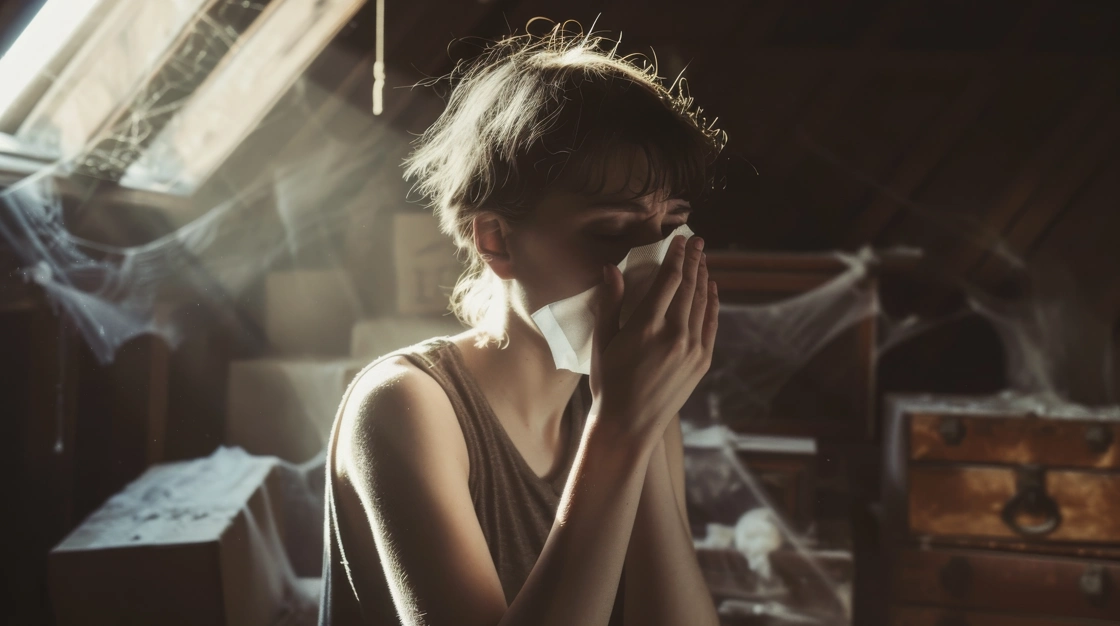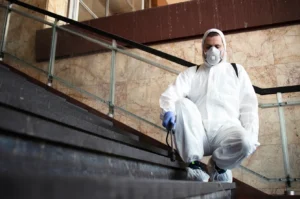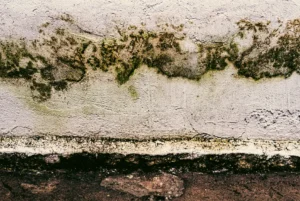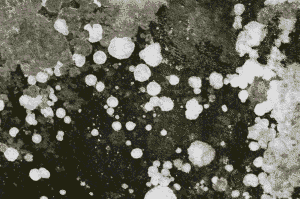Eczema is a skin disease where you notice itchy, dry, and flaky skin patches. A few people are constantly struggling with it, and it appears without any warning. There are multiple known triggers, one of which is lead dust.
So, if you are thinking, can lead dust give you eczema, the answer is yes. Lead is commonly found in old buildings and homes, and it is really hazardous. This invisible hazard is found in countless older homes and buildings, and it is harmful for everyone. If you are dealing with skin issues, get your home tested for lead.
What Is Lead Dust and Where Does It Come From?
Lead dust is a fine powder that comes from deteriorating lead-based paint, contaminated soil, or renovation debris. It doesn’t have any smell or color, which is why people often overlook it. Homes built before the late 1970s often contain materials that include lead. When painted surfaces chip, peel, or are sanded during repairs, they release lead particles into the air and onto nearby surfaces.
The dust settles on floors, shelves, window frames, and toys. It can stay there until cleaned properly. And with everyday movement, it gets stirred up again, entering the air we breathe or landing on our skin.
How Skin Reacts to Lead Dust?
Skin is the first line of defense against outside elements. But that protective layer wears down. For people with eczema, this barrier is already weaker than normal. That’s why it gets easier for the environmental irritants to cause damage.
Lead dust isn’t something most people think of as a skin threat. But when it settles on dry, broken, or inflamed skin, it can worsen irritation. In homes with lead problems, there have been reports of more frequent or severe flare-ups among individuals with chronic skin conditions.
Our body is not designed to process lead. Once it enters the bloodstream, it easily disrupts normal immune responses. Therefore, it is important to avoid lead exposure and stay healthy.
Can Lead Dust Cause Eczema?
There’s no clear-cut answer yet, but evidence suggests that exposure to lead can make eczema worse, and possibly trigger symptoms in people who are prone to skin conditions.
When exposed to lead dust, the body may react in a few ways:
- The immune system becomes more reactive, leading to inflammation
- Oxidative stress increases, damaging skin cells and slowing healing
- The skin barrier becomes compromised, allowing allergens and bacteria to get in more easily
None of these issues is exclusive to lead exposure, but when combined, they create a perfect storm for skin problems.
Eczema doesn’t appear out of nowhere. It often needs a trigger. In some homes, especially older ones undergoing renovations or poorly maintained, lead dust may be that hidden trigger.
Also Read: How to Safeguard Your Family During a Lead Inspection
What Eczema Looks Like When Lead Is Involved?
It’s not easy to tell what’s causing a specific eczema flare-up, but if lead dust is part of the problem, some patterns may emerge:
- Flare-ups happen more often after cleaning, vacuuming, or sanding
- Skin irritation worsens after spending time indoors
- Patches appear in children who crawl or play on the floor frequently
- Eczema doesn’t respond to treatment the way it used to
Parents often notice that their child’s skin gets worse after moving into a new place, especially older apartments or houses. In some cases, eczema seems to appear out of nowhere in an otherwise healthy child.
Other Health Risks of Lead Exposure
Skin irritation might be the most visible symptom, but it’s far from the only concern. Lead builds up in the body over time. The longer you’re exposed, the more damage it can do.
In Children:
- Slower brain development
- Learning difficulties
- Mood or behavior changes
- Hearing issues
In Adults:
- High blood pressure
- Memory and focus problems
- Muscle and joint pain
- Reproductive issues
These symptoms don’t always show up right away. That’s what makes lead exposure so dangerous. You may not feel sick, but your body is being affected.
How Does Lead Enter the Body?
Most people think you have to eat paint chips to be exposed to lead. But that’s just one route. Here’s how it usually happens in real life:
- Breathing in dust during home repairs or regular cleaning
- Touching contaminated surfaces, then eating or touching your mouth
- Absorption through broken skin, especially in those with eczema or cuts
Children are especially at risk. Their hands are constantly on the ground, and they touch their faces often. Once lead enters their system, it doesn’t leave easily.
Signs Your Home Has Lead Dust
You won’t see or smell lead dust, but here are a few things that may suggest a risk:
- The home was built before 1978
- You notice old, peeling paint around windows or doors
- Renovation work has been done without professional lead safety measures
- Children or pets seem to be sick more often since moving in
How to Test for Lead?
There are two main ways to check for lead in your home:
DIY Test Kits
Available at most hardware stores, these can check for lead in paint or dust on surfaces. They’re not always 100% accurate, but they can give you a quick idea.
Professional Lead Testing
A certified lead inspector uses advanced tools to test surfaces, air, and even soil around your home. This is the best option if you’re planning renovations or if someone in the house is showing symptoms of lead exposure.
Also Read: How much does Lead Water Testing Cost in NYC
Tips To Prevent or Reduce Lead Exposure
If you suspect your home contains lead, there are steps you can take right away to reduce exposure, especially if eczema is a concern.
- Wet-clean floors and surfaces rather than dry sweeping or dusting
- Use a vacuum with a HEPA filter
- Wash your hands regularly, especially before meals and after being outdoors
- Avoid disturbing old paint. Don’t sand or scrape without guidance
- Keep kids from chewing painted surfaces, like windowsills or railings
How To Take Care of Eczema Patients at Home?
Skin care matters even more when your environment is a factor.
- Stick to gentle, fragrance-free moisturizers
- Avoid hot showers that dry out skin
- Keep nails short to prevent open wounds from scratching
- Use cotton sheets and soft fabrics that don’t irritate the skin
- Watch for patterns, note when flare-ups happen, and where in the house
If your skin or your child’s seems to worsen without a clear cause, look beyond products or food and consider the environment.
Get Rid of Lead With NYC Lead & Mold
Get rid of lead hazards safely with NYC Lead & Mold. Our certified team specializes in lead removal from homes, apartments, and commercial spaces across New York City. Whether it’s peeling paint, contaminated dust, or renovation debris, we ensure complete cleanup and compliance with city regulations. Don’t risk your lives with lead exposure. Call us now and schedule your appointment for lead testing and removal.






